Federated Approach to Code Sharing
Jason Duley
OCIO T&I Division/ARC
jason.duley@nasa.gov
4/15/2016
Goals
-
Goals of a successful Code Sharing System:
-
Re-use, Re-use, Re-use
-
Provides Localized Access Control
-
Empowers Localized DevOps
-
Heterogenous Architecture
-
Reduction of Copies/Orphan Branches
-
Automates
-
Software Release Process
-
Meta-data collection
-
-
How
-
Approaches: Centralized vs Federated
-
Centralized vs Federated Code Sharing architecture is not an "OR" but an "AND" and requires concepts from both paradigms
-
Need to overcome short-comings of pure Centralized approach and meet goals developers demand using a minimally intrusive and loosely-coupled Federated Approach
-
Culture meets reality
-
NASA Missions/Projects/Programs are highly distributed, highly diverse and require IT systems to match this reality
-
These parties require localized control to match their requirements based on mission type, funding, CM versioning system of choice, level of security, DevOps customization, etc.
-
The agency needs a way to integrate these disparate systems that; give teams control to work effectively and provide the ability to have insight into all of NASA's software efforts
Federated Approach
- Big Idea
- Provide some "centralized" systems such as developer.nasa.gov, GitHub.com/NASA, ipas-gitlab, etc. for teams that do not have the IT resources to setup their own
- Embrace teams that leverage existing center, workgroup and mission-based CM systems to participate
- Federate all of these
Benefits
- Idea
- Do for Heterogeneous distributed Code Repositories what Google did for Web Servers - provide a unified interface to find stuff in one place
- NASA users will be able to find code on geographically dispersed systems without regard for actual host location
- Why
- Allows localized control with agency-wide visibility
Progress
- Initial prototype developed and running in the Ames datacenter on small dev VM
- Received funding to build Phase 1 of system (expand prototype)
- Work for Phase 1
- Catalog existing nasa.gov domain code versioning instances across the agency
- Connect to participating repositories in each of those instances to form federation of repositories
- Enable full-text search and distributed code browsing from a single web application
- Apply metadata to projects and enable facet-search on projects to boost re-use and discoverability
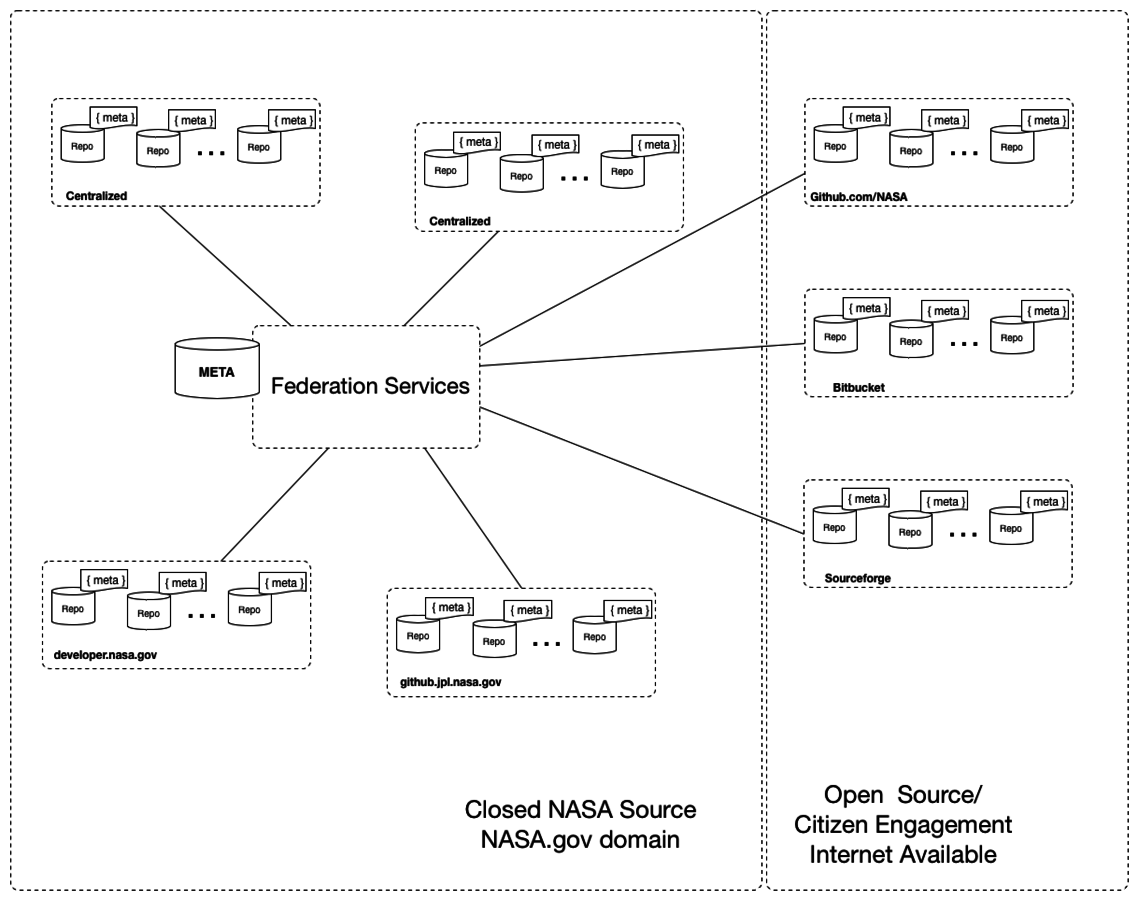
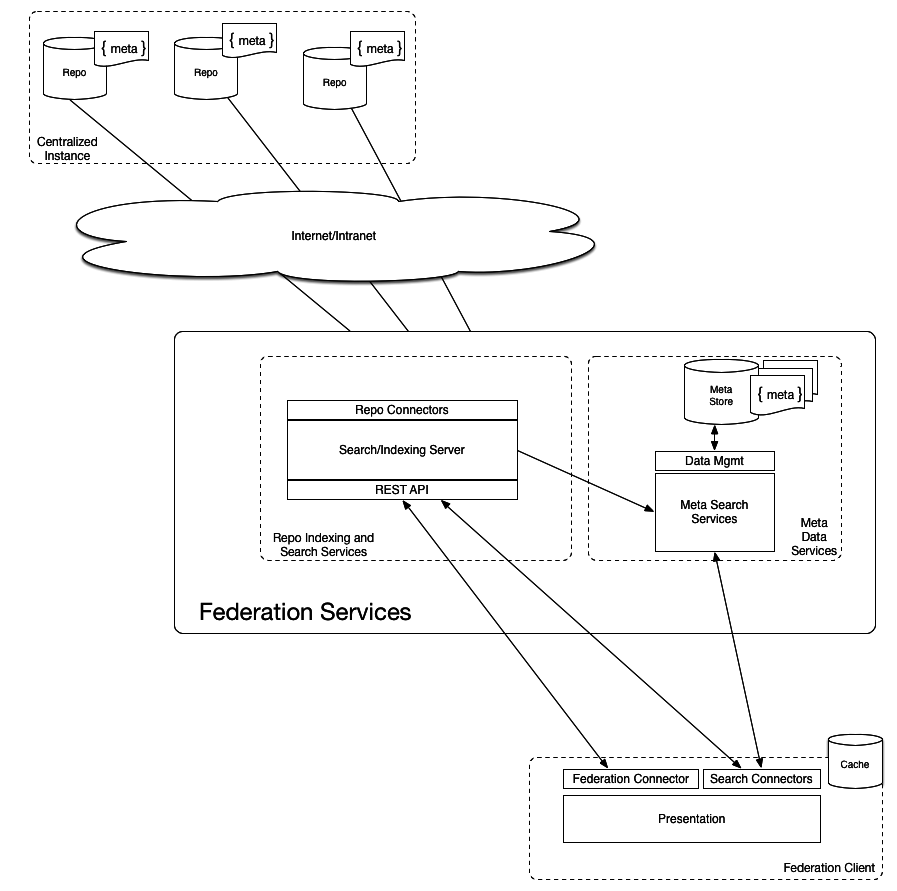
Federated Code Sharing
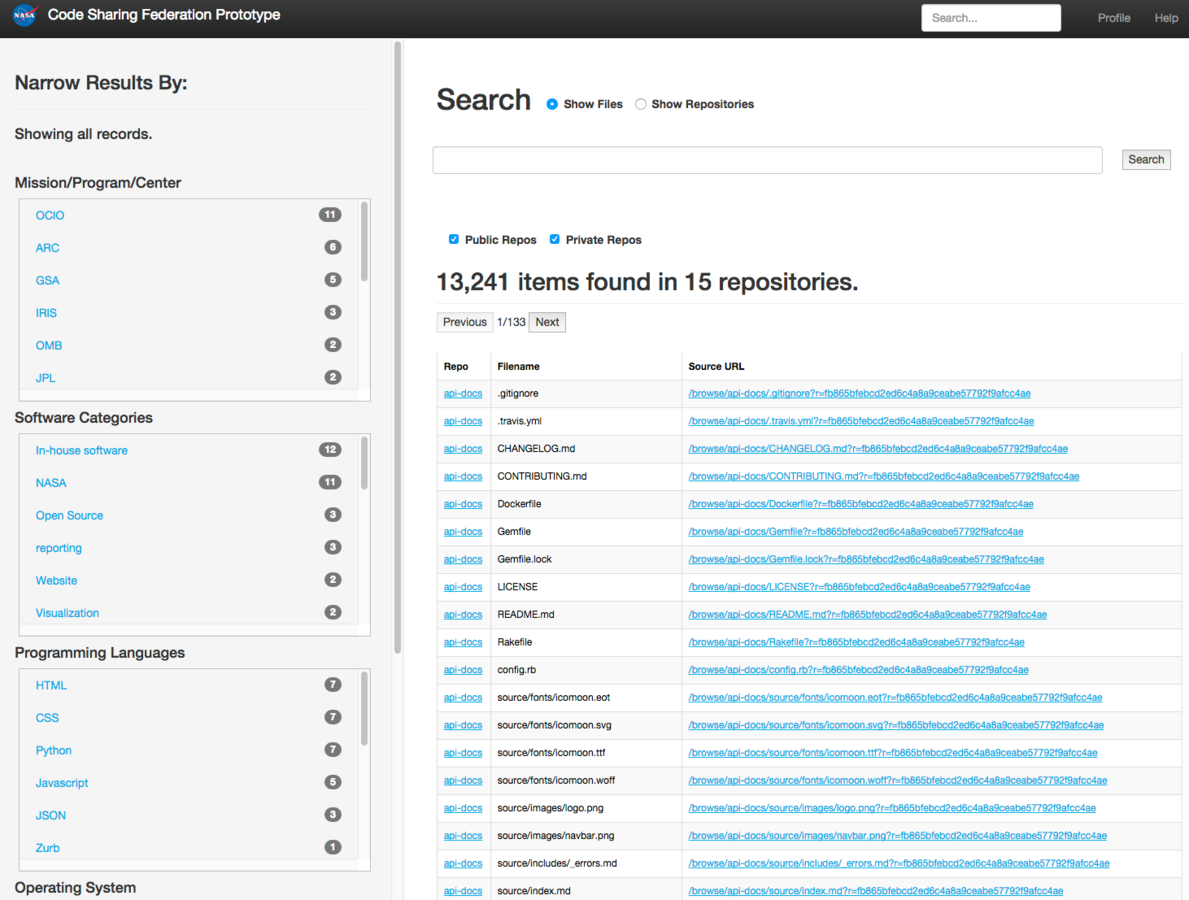
Federated Code Sharing
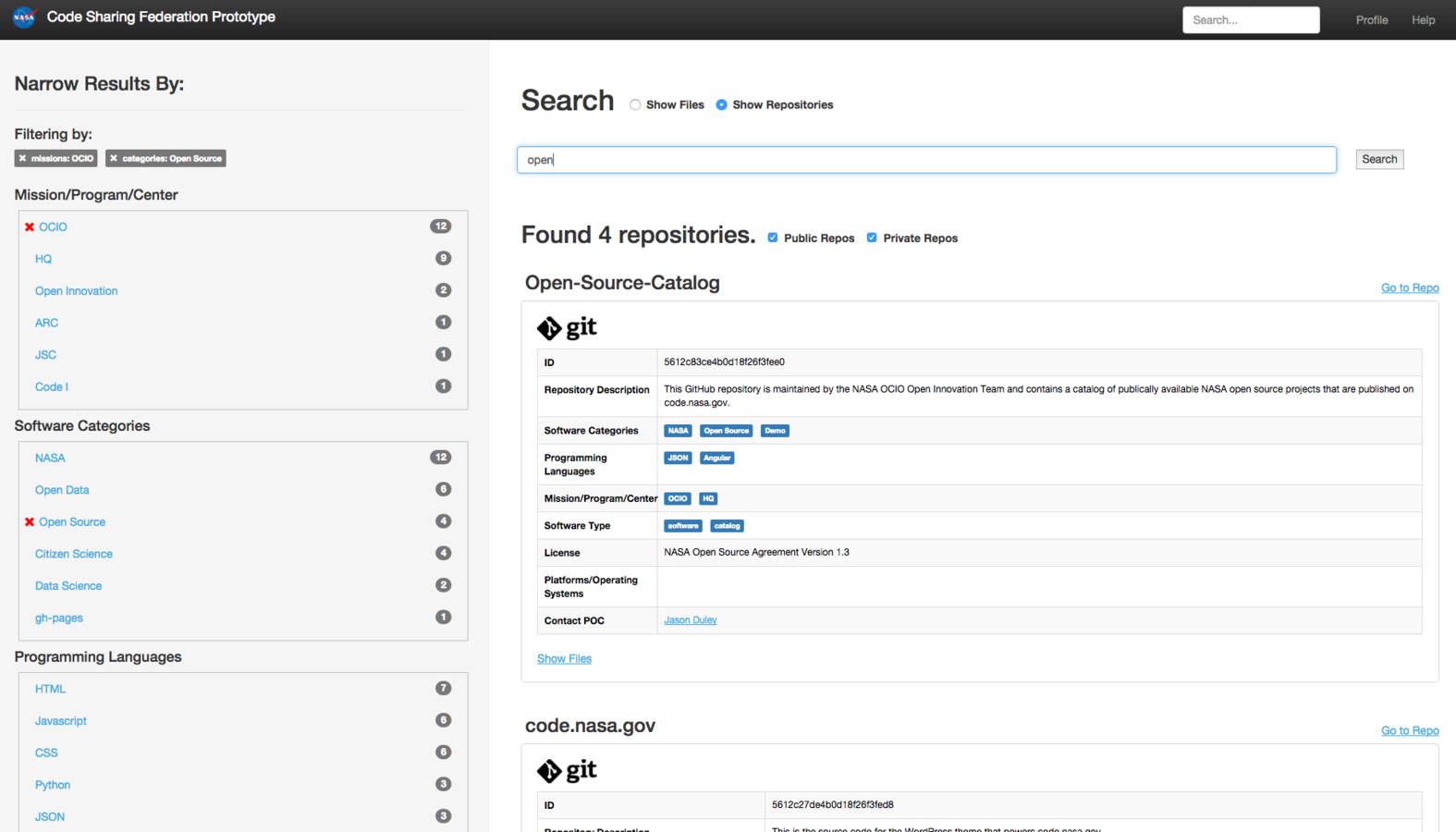
Federated Code Sharing
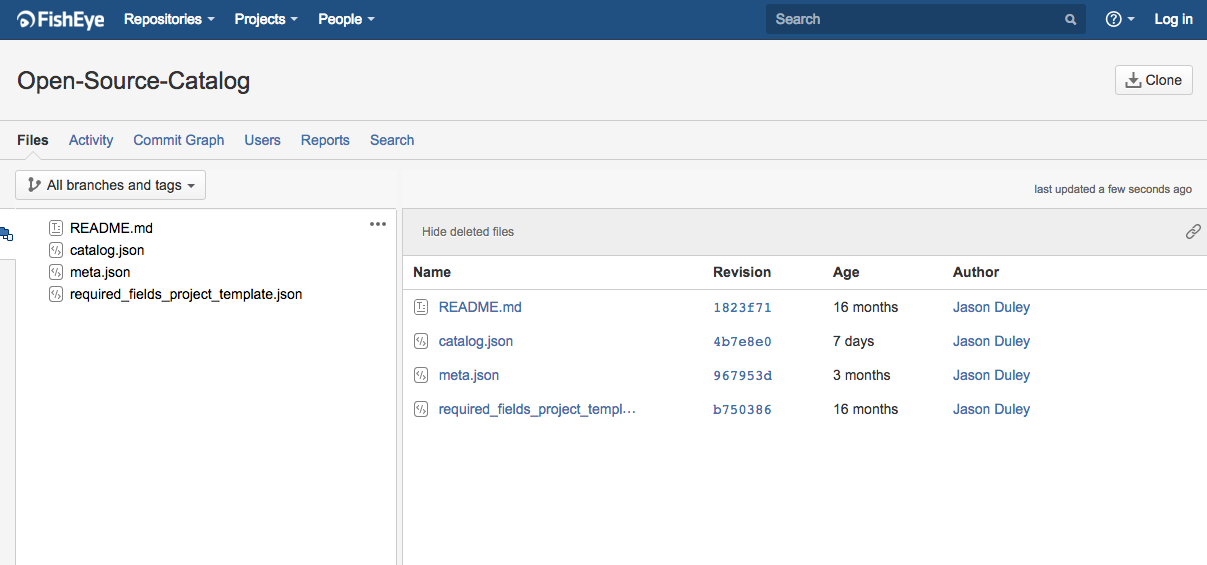

Meta data
-
Projects define meta data in JSON serialized descriptor files that live with the project
-
Software/Code owners can define their own facet values which are dynamically displayed in the federation browser at runtime
-
Architecture can support extensive descriptor vocabularies to increase specificity of metadata

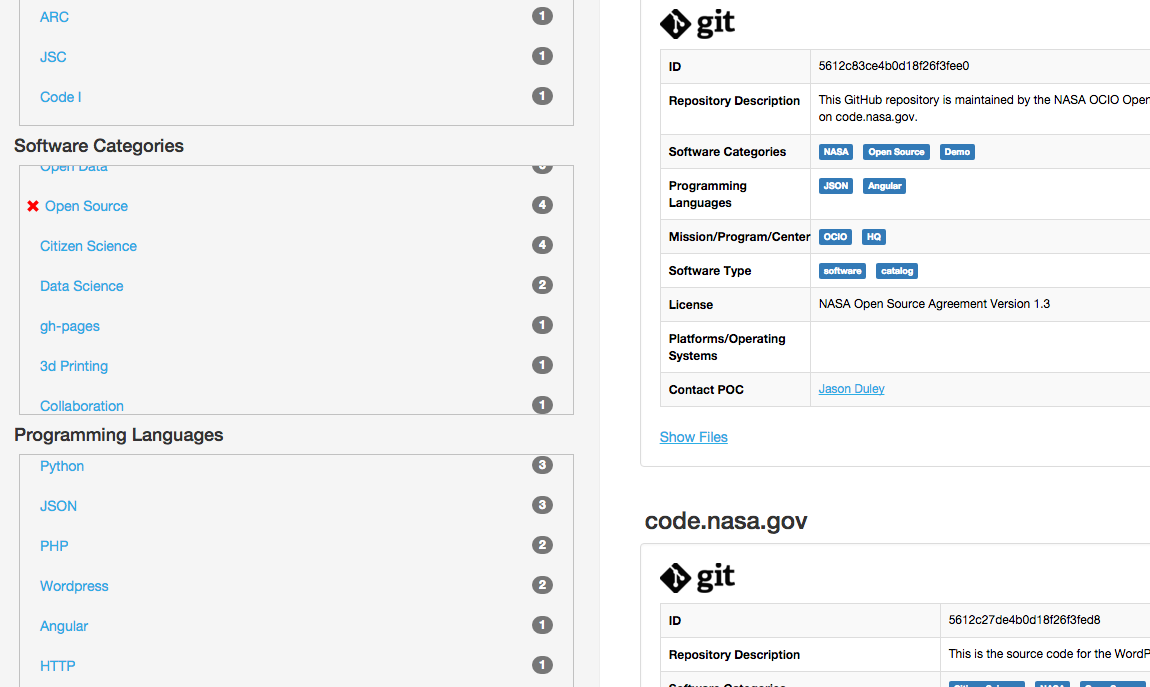
Backup
Process

Code Sharing
-
Open Source Software publication
-
180+ Released Open Source projects
-
Community-driven via Open Software Catalog
-
Search Projects, SRA Contact Info, Process Information
-

http://code.nasa.gov
Code Sharing
-
Internal NASA Code Sharing
-
Heterogenous Federated Code Sharing System Prototype
-
Repositories (GIT / SVN / Hg / CVS / Custom)
-
Distributed Repository Browsing
-
Full-text Search of Source Code
-
Faceted Search of Projects
-
Leverage Data Standards to model software projects (Distributed Software Registry)
Code Sharing

Distributed Software Registry
- Problem: Need a way to describe Software Projects using a standard controlled vocabulary
- How: Leverage Data On A Project (DOAP) RDF vocabulary to model software assets
- Challenge: Need a simplified way to allow software owners create/manage descriptions
- Solution: Create a framework to allow authoring of project descriptions which are easy for developers to use, but create metadata descriptions with enough specificity